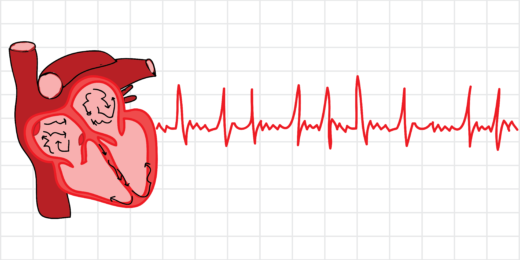For those patients with atrial fibrillation (AFib) at high risk of having a stroke, drugs that reduce the blood's ability to clot are quite effective. In most cases, these blood thinners effectively eliminate the risk of having a type of stroke that frequently occurs with this heart condition. At the same time, excessive bleeding is a serious side effect of these medications and requires that they be used carefully.
In earlier posts, we met George H., a 71-year old retired engineer.
After years of experiencing episodes of a rapid heart rate, George was diagnosed with AFib during a doctor's visit. Sent to the emergency room for further evaluation, he was at first reassured that he wasn't having a heart attack.
After a review of his stroke risk, the ER physician prescribed Eliquis (generic name: apixaban), a strong blood thinner.
A week later, however, George was startled to find blood in his stool and naturally worried that his bleeding was serious. Luckily, he quickly went to urgent care where blood tests for anemia were stable.
A few days later, a colonoscopy revealed bleeding from his hemorrhoids, a startling, but more mild problem rather than something more ominous. He was annoyed, however, that no one had told him that abnormal bleeding was a frequent side effect of blood thinners: the price to pay for protection from a stroke.
The blood's ability to clot is miraculous. It is critical to human survival; without this well-tuned system of blood clotting, we would die from minor injuries.
In AFib, however, drugs are given to intentionally impair the blood's ability to clot. The upper chambers of the heart (the atria) do not beat properly in AFib, which allows small blood clots to form on the inner walls of the heart. These blood clots can then fall off and travel to the brain where they block off an artery supplying oxygen and nutrients to the brain, resulting in a stroke.
Strokes can be mild or temporary, or so severe that major disability or death occurs. Without blood thinners, the risk of someone with AFib having a stroke averages about 2.3 percent per year or 20 percent over 10 years. As we talked about previously, the trade-off of preventing these strokes is major bleeding, which occurs in 2 percent of patients annually taking blood thinners.
What type of blood thinner is best?
There are four groups of drugs that block blood clotting. While all these drugs can be used to prevent strokes in people with AFib, each has its advantages and disadvantages.
- Warfarin (brand name Coumadin) was until 2012 the standard oral blood thinner for AFib. Stronger than aspirin, it knocks out special proteins in the blood needed for clots to form. Warfarin is inexpensive, but can be a hassle because it requires precise dosing and careful monitoring with frequent lab tests. Excessive doses can be dangerous. Currently, 20 percent of patients with AFib are prescribed warfarin.
- Direct oral anticoagulants work in a way that is similar to warfarin, but don't need monitoring or special dosage adjustments. Their big advantage is simplicity, although they are expensive ($400 per month). They also wear off very quickly if a dose is missed. These drugs include apixaban (brand name Eliquis, 26 percent of patients with AFib use this drug), rivaroxaban (Xarelto, 15 percent ), and dabigatran (Pradaxa, 5 percent).
- Aspirin interferes with small blood cells known as platelets to reduce blood clotting. Taken by 3 percent of AFib patients, aspirin and drugs similar to aspirin are weaker in protecting against strokes.
- Heparins, injected drugs used by 1 percent of AFib patients, are useful for urgent blood thinning.
Research suggests that about 10 percent of AFib patients don't need blood thinners because their risk of having a stroke is so low. National data also suggests that an additional 20 percent of AFib patients are not taking a blood thinner when they should be. Remember, without protection from a blood thinner, these patients are at risk for preventable strokes.
If you or someone you know has AFib, it is critical to have a discussion with a doctor about the potential benefits of taking a blood thinner.
This is the third in a series of blog posts called Understanding AFib to help patients with atrial fibrillation live healthier lives. Next, I'll discuss drugs that slow down the heart so that patients with AFib can function better. George H. is an actual patient with some details altered to protect his confidentiality. Estimates of blood thinner use come from IQVIA's National Disease and Therapeutic Index.
Randall Stafford, MD, PhD, is a professor of medicine at Stanford and practices primary care internal medicine. Stafford and Stanford cardiologist Paul Wang, MD, lead an American Heart Association effort to improve stroke prevention decision-making in atrial fibrillation.
Photo by Richard Villalon





